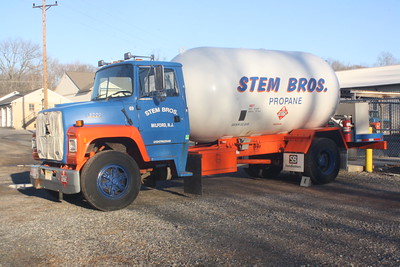
Propane is a widely used fuel source, commonly found in heating systems, cooking appliances, and vehicles. Its popularity stems from its efficiency, affordability, and low environmental impact.
This article aims to explore the chemical nature of propane, delving into its chemical and physical properties, applications, and safety considerations. By understanding the fundamental aspects of propane, we can better appreciate its importance in our daily lives.
Is Propane a Chemical Substance?
Propane is indeed a chemical substance, classified as a hydrocarbon due to its composition of hydrogen and carbon atoms. Its chemical formula is C3H8, indicating that each molecule of propane contains three carbon atoms and eight hydrogen atoms bonded together. Propane’s molecular structure and chemical properties, such as its flammability and reactivity with other substances, make it an ideal fuel source for a wide range of applications.
As a colorless and odorless gas at standard temperature and pressure, propane exhibits unique physical properties, including its low boiling and melting points. These properties allow it to be easily stored and transported as a liquid under pressure. Propane is commonly used in residential, commercial, and industrial settings for purposes like heating, cooking, and as a raw material in chemical production. Its lower greenhouse gas emissions compared to other fossil fuels make it a more environmentally friendly choice.
Basics of Chemistry
Before diving into the specifics of propane, it’s crucial to understand some basic chemistry concepts. A chemical substance is a form of matter with a constant composition and distinct properties. Chemical substances can be categorized into elements, molecules, and compounds.
Elements are the simplest form of matter, consisting of only one type of atom, while molecules are combinations of two or more atoms bonded together. Compounds, on the other hand, are substances formed from two or more different elements in fixed proportions.
Chemical properties describe how substances undergo changes that result in the formation of new substances, whereas physical properties describe their observable characteristics without altering their composition.
Propane: Chemical Properties and Composition
Propane is a hydrocarbon, which means it consists of hydrogen and carbon atoms. Its chemical formula is C3H8, indicating that one molecule of propane contains three carbon atoms and eight hydrogen atoms. Propane’s molecular structure is characterized by a central carbon atom bonded to two other carbon atoms, each of which is bonded to three hydrogen atoms.
One of the primary chemical properties of propane is its flammability. When mixed with air and exposed to an ignition source, propane undergoes combustion, producing heat, carbon dioxide, and water. This property makes it an ideal fuel source. Propane can also react with other substances, such as halogens, to form different compounds. When compared to other hydrocarbons, such as methane and ethane, propane exhibits similar chemical properties due to its similar molecular structure.
Physical Properties of Propane
Propane is a colorless and odorless gas at standard temperature and pressure. Its boiling point is -42°C (-44°F), while its melting point is -188°C (-306°F).
Due to these low boiling and melting points, propane is typically stored and transported as a liquid under pressure. The density of propane gas is approximately 1.5 times that of air, causing it to settle in low-lying areas when released.
Although naturally odorless, an odorant, such as ethyl mercaptan, is typically added to propane to make it detectable in case of leaks. Propane has low solubility in water, which means it does not dissolve easily in water.
Applications of Propane
Propane is utilized in various residential, commercial, and industrial applications.
In residential and commercial settings, propane is commonly used for space heating, water heating, and cooking appliances. It also serves as fuel for forklifts, generators, and transportation vehicles.
Propane’s industrial applications include crop drying, metal cutting, and as a raw material in the production of various chemicals, such as propylene and polypropylene.
One of the main environmental benefits of using propane is its lower greenhouse gas emissions compared to other fossil fuels, such as coal and gasoline.
Safety and Handling of Propane
While propane offers numerous benefits, it also poses certain risks. Its flammability presents a risk of explosion or fire if leaks occur or if propane is improperly stored or handled. Proper storage, transportation, and handling of propane are essential to minimize these risks. Propane should be stored in specially designed containers and kept away from heat sources or open flames. Regular inspections of propane storage and handling systems are crucial to ensure their integrity and safety. Additionally, adhering to safety guidelines and regulations, such as those established by the National Fire Protection Association (NFPA) and the Occupational Safety and Health Administration (OSHA), is critical in preventing accidents and ensuring the safe use of propane.
Moreover, it is essential for users to be educated about the properties of propane and how to respond in case of an emergency. This includes knowing how to detect propane leaks, understanding the appropriate actions to take, and being familiar with the emergency contact information for local propane suppliers or emergency services.
Conclusion
Propane is indeed a chemical substance, with distinct chemical and physical properties that make it an efficient, versatile, and environmentally friendly fuel source. Understanding the properties and nature of propane allows users to better appreciate its importance in various applications and to handle it safely and responsibly.
As our knowledge of propane and other alternative energy sources expands, future research and development may uncover new applications and even more efficient ways to utilize propane. By staying informed and embracing advancements in technology and safety practices, we can continue to benefit from propane’s many advantages while minimizing its potential risks.

Mike is an experienced propane technician with over 15 years of professional experience in the field. He has dedicated his career to helping customers with their propane needs, from installation to maintenance and repair. Together with Jeremy, he co-founded this website to provide useful information and guidance to customers seeking reliable propane services.



